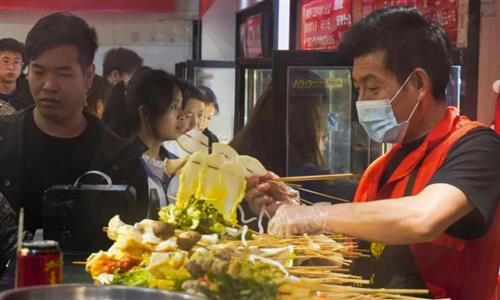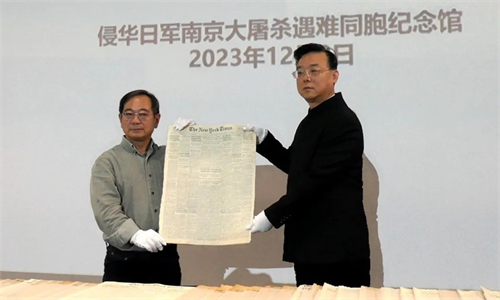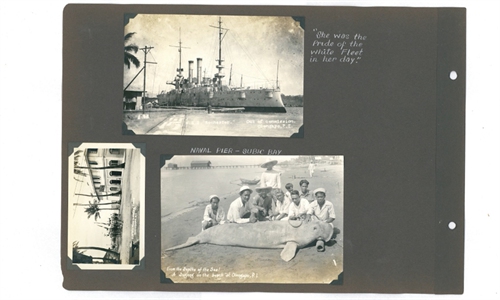ARTS / CULTURE & LEISURE
Photo albums documenting Nanjing Massacre revealed
Materials fill critical gaps in research: historian
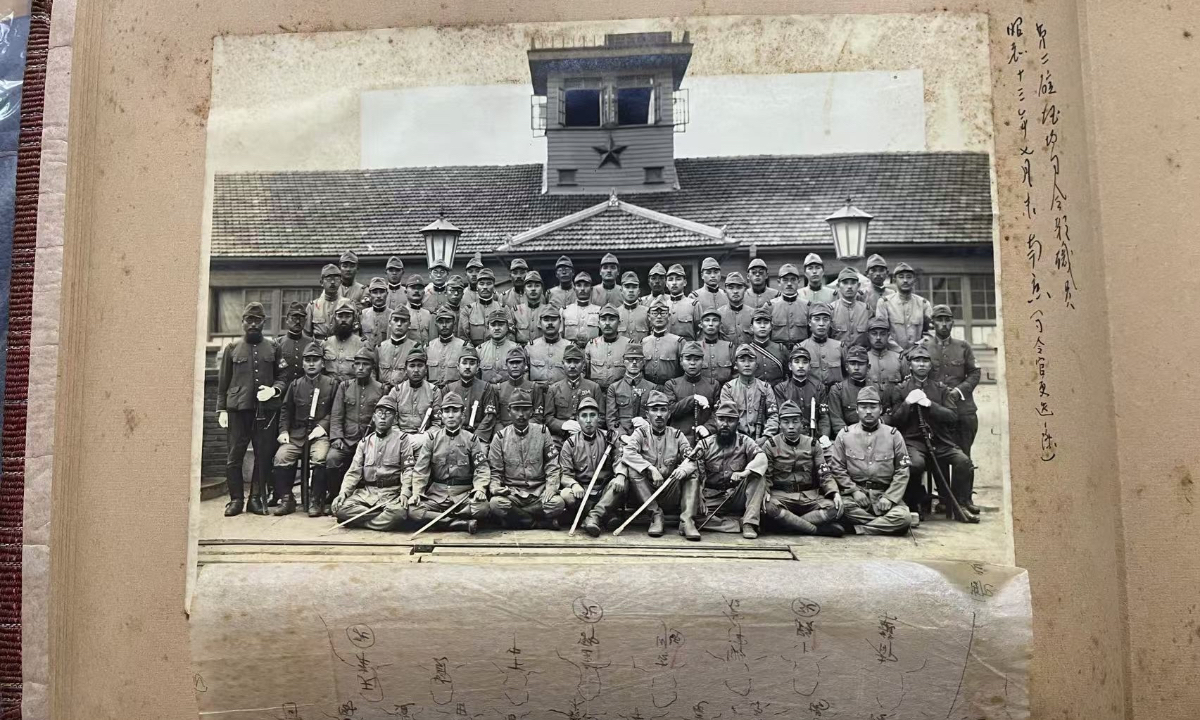
Photo: Courtesy of Lu Yanming
The albums, containing photographs never before seen by the public, provide powerful evidence of the brutal actions taken by Japanese troops during the capture of Nanjing, the then Chinese capital, on December 13, 1937.
The Nanjing Massacre, which lasted for more than 40 days, resulted in the death of more than 300,000 Chinese civilians and unarmed soldiers in Nanjing and the rape of 20,000 women.
The discovery of the two albums was made by Lu Yanming, a historian of the Nanjing Massacre and researcher at the Red Culture Research Institute at Changzhou University in Jiangsu Province.
The first album contains 73 photographs that were taken during the Japanese occupation of Nanjing and captures the activities at the Second Anchorage headquarters of the Japanese military - a crucial site for the army's logistics operations.
Lu told the Global Times that the Second Anchorage headquarters, located near the Xiaguan Wharf in Nanjing, was responsible for logistical support for the Japanese forces during the Nanjing Massacre. In addition to its primary duties, it was also involved in a secret operation: the disposal of the bodies of those killed in the massacre to erase evidence.
The photographs documented the regular operations of the Second Anchorage headquarters. The album also includes photographs showing various scenes at the anchorage, including group photos of the military personnel stationed there and images of key figures who visited the site, including senior officers and Japanese royal family members.
One of the photos in the album shows a group photo, with handwritten annotations revealing the identities of key figures, such as Kenrou Kajitani, a then sergeant assigned to the Second Anchorage headquarters of the Japanese military.
"About 3,000 or 4,000 Chinese people, with their arms tied behind them, were driven in four columns to the coal port in the north of Nanjing, where they were shot by two heavy machine guns," Kajitani wrote in his diary. The passage documents what happened on December 17, 1937 during the Nanjing Massacre, in which Kajitani had participated, according to China Military Online.
The other photo album focuses on the Japanese military's systematic investigations of Chinese defense structures in Nanjing. It contains more than 150 photographs, mostly taken shortly after the fall of Nanjing, showing Chinese air defense facilities that were constructed to protect the city.
These facilities included observation posts, ammunition depots and defensive networks that were crucial to Chinese defense efforts during the early stages of the invasion. Nearly all of the photos have corresponding captions and codes at the bottom.
"This is a collection of materials reflecting the construction of Nanjing's air defense facilities and the air defense battles during the war," Lu told the Global Times.
These photos serve a clear military investigative purpose and are irrefutable evidence of the Japanese troop's invasion of China, Lu noted.
According to Lu, these two photo albums are significant not only for their historical value but also because they fill critical gaps in the research surrounding the Nanjing Massacre.
These two photo albums of the Japanese military during the invasion of China differ from officially published materials, as they were privately taken and collected by Japanese soldiers, making them unique.
Additionally, the themes of the two albums are also very specific, focusing on subjects rarely or never seen in earlier photos, such as panoramic and detailed views of the Nanjing Anchorage headquarters, group photos of its staff, work scenes at the site, and secret air defense facilities built by Chinese soldiers and civilians before the fall of Nanjing.
"The new evidence makes the history of the Nanjing Massacre, a tragedy that must not be forgotten, all the more profound. For this special chapter in history, these artifacts are not just physical remnants but irrefutable proof that cannot be denied or altered," Lu said.
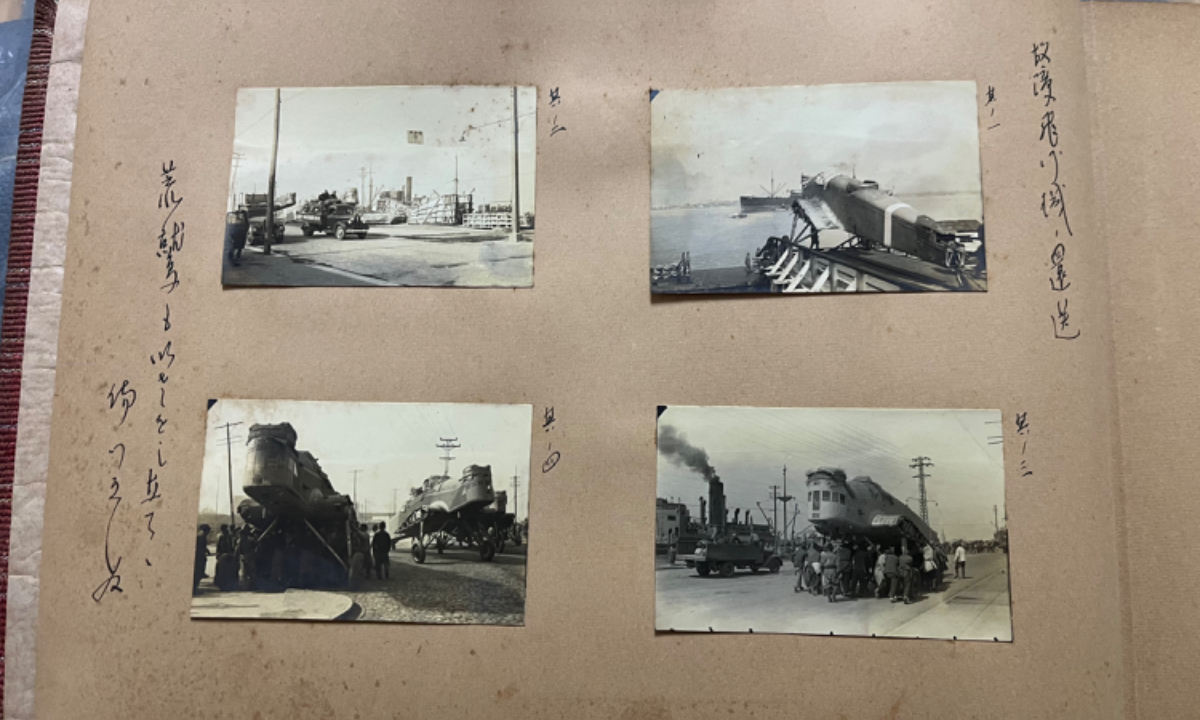
Photo: Courtesy of Lu Yanming
